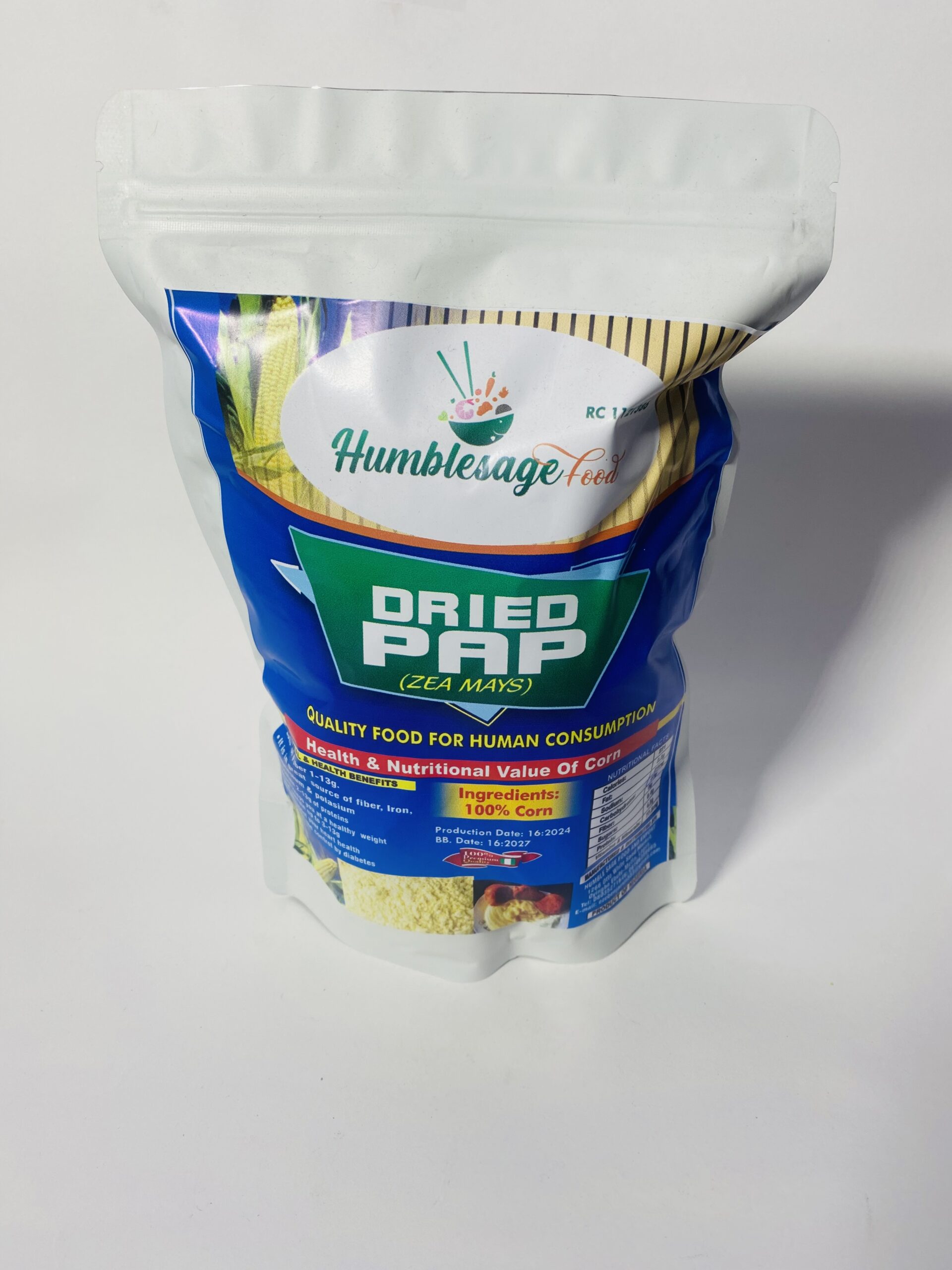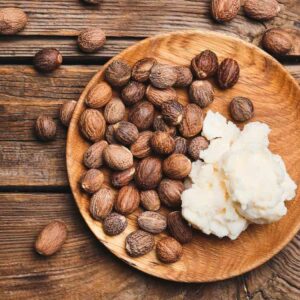Sale!
Dried pap
Original price was: ₦6,000.00.₦5,000.00Current price is: ₦5,000.00.
Dried pap, from fermented maize, sorghum, or millet, is a tangy, nutrient-rich powder for quick porridge or snacks. High in energy and vitamins, it’s perfect for breakfast or infant weaning. Store in a cool, dry place for lasting freshness.
Description
Dried pap is a traditional West African food product made from fermented and dried maize (corn), sorghum, or millet. It is a convenient, non-perishable form of the popular local porridge known as pap, akamu, ogi, or koko, depending on the region and language. This versatile food is used primarily as a breakfast meal or weaning food for infants but is also enjoyed by people of all ages.
Source Ingredients
- Maize (Zea mays)
- Sorghum (Sorghum bicolor)
- Millet (Pennisetum glaucum or Eleusine coracana)
Processing Steps
- Selection and Cleaning:
- High-quality grains (maize, sorghum, or millet) are selected.
- The grains are thoroughly cleaned to remove dirt, stones, and other impurities.
- Soaking and Fermentation:
- The cleaned grains are soaked in water for 2-3 days to initiate fermentation.
- Fermentation softens the grains and develops the characteristic tangy flavor.
- Wet Milling:
- The fermented grains are wet milled to form a smooth slurry.
- The slurry is sieved to remove the chaff, leaving behind the smooth, starchy part.
- Fermenting the Slurry:
- The slurry is left to ferment further for an additional 1-2 days to deepen the flavor.
- Drying:
- The fermented slurry is spread thinly on drying trays and dried in the sun or using a dehydrator until all moisture is removed.
- The dried product is then broken into flakes or ground into a fine powder.
- Packaging:
- The dried pap is packed in airtight containers or bags to maintain its quality and shelf life.
Physical Characteristics of Dried Pap
- Color: Light cream to pale yellow, depending on the type of grain used.
- Texture: Fine powder or small flakes.
- Aroma: Mild, slightly sour aroma due to fermentation.
- Flavor: Tangy, slightly sour taste with a hint of sweetness.
Nutritional Profile (per 100 grams)
- Calories: Approximately 350 kcal
- Carbohydrates: Around 75-80 grams
- Protein: About 5-7 grams
- Fat: Roughly 1-2 grams
- Fiber: Approximately 2-4 grams
- Vitamins and Minerals: Rich in B vitamins (thiamine, riboflavin, niacin), vitamin C, iron, magnesium, and calcium.
Health Benefits
- Digestive Health: Fermentation increases the digestibility of grains and adds beneficial probiotics, aiding in gut health.
- Energy Source: High in carbohydrates, providing a quick and sustained source of energy.
- Nutrient-Rich: Contains essential vitamins and minerals that support overall health.
- Infant Nutrition: Commonly used as a weaning food for infants due to its smooth texture and nutritional content.
- Low Fat: Naturally low in fat, making it a healthy addition to various diets.
Culinary Uses
- Breakfast Porridge: Reconstituted with water or milk to make a smooth, creamy porridge.
- Weaning Food: Used as a first solid food for infants.
- Snacks and Desserts: Can be sweetened and flavored for use in snacks and desserts.
- Baking: Sometimes used as an ingredient in baking recipes for added nutrition and flavor.
Traditional Preparation of Pap
- Rehydrating the Dried Pap:
- Mix the dried pap powder or flakes with water to form a smooth paste.
- Gradually add boiling water while stirring continuously to avoid lumps.
- Continue stirring until the mixture thickens to a smooth, creamy consistency.
- Serving:
- Serve hot with sugar or honey and milk for added flavor.
- It can also be accompanied by akara (bean fritters), bread, or other side dishes.
Storage
- Conditions: Store in an airtight container in a cool, dry place away from direct sunlight.
- Shelf Life: Can last for several months to a year if stored properly, with minimal exposure to moisture and air.
Cultural and Historical Significance
- Culinary Tradition: Dried pap is a staple food in many West African countries, with a long history of traditional preparation and consumption.
- Festivals and Ceremonies: Often prepared during special occasions, festivals, and traditional ceremonies.
- Economic Importance: The production and sale of dried pap provide a source of income for many small-scale farmers and processors.
Safety and Precautions
- Allergies: Generally safe for most people, but those with specific grain allergies (e.g., maize) should exercise caution.
- Quality Control: Ensure that dried pap is sourced from reputable suppliers to avoid contamination with dust, mold, or other foreign materials.
Additional information
| Weight | N/A |
|---|---|
| Package Size | 500g |






Reviews
There are no reviews yet.